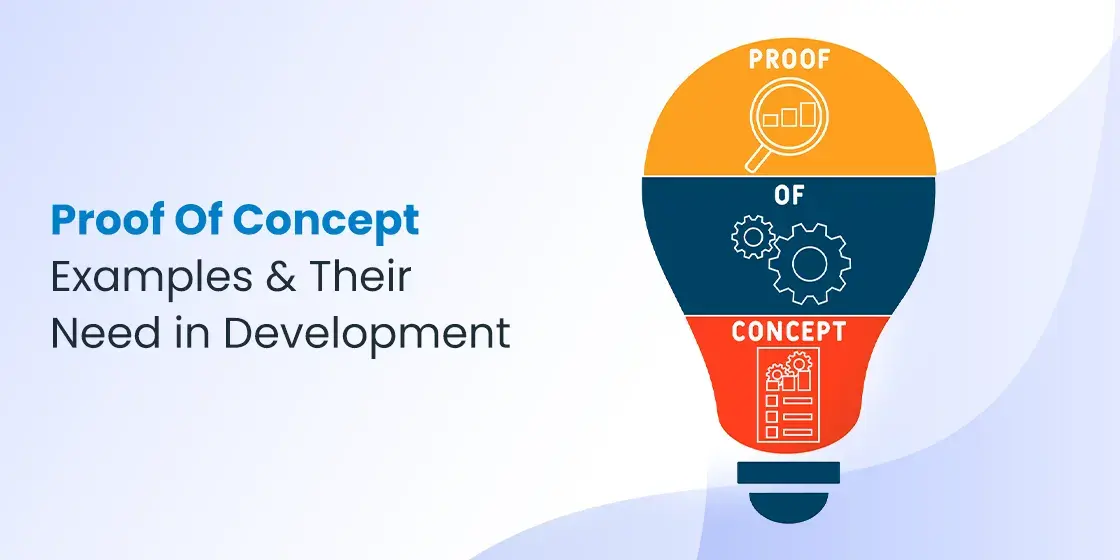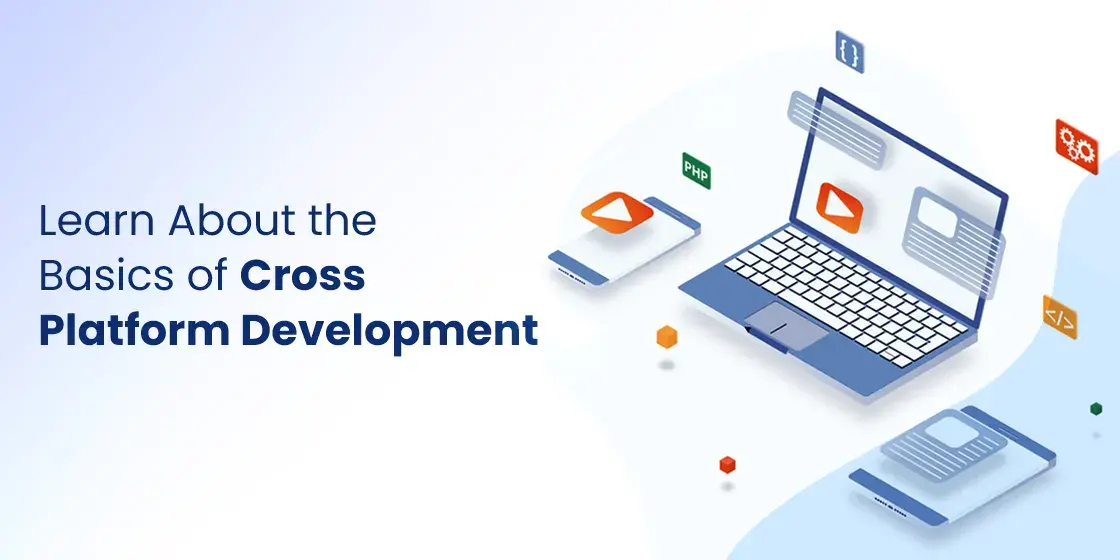Table of Content
Understand the Importance of Proof of Concept in Software Development
Startups are all the rage nowadays, especially tech-based startups. And with the market being so competitive, CEOs are looking to get their product out to the market as soon as possible. Now, in order to do that, they are looking for ways to shorten the cycle of product development. So many of them are now wondering, why they need to develop a proof of concept when they can go directly to the MVP phase.
However, the proof of concept has its own place in product software development. Going directly to the minimum viable product development will end up hurting the organization in the long run, and may even end up in a failed product. Let’s take a moment to understand the importance of proof of concept in software development, and look at a few proof of concept examples to see how they shaped the final product.
What is a Proof of Concept in Software Development?
A proof of concept, whether it is for tech or any other industry, refers to the process through which a person can show that a specific idea or theory is possible and usable in the market. You can also call it the process of testing out a theory practically, to see how possible, or commercially/financially viable it is.
This process is useful as it allows the organization or person developing the proof of concept to show that something is doable in a manner that makes it worth investing in. And that can be quite useful for startups, as that can show investors that the idea or startup is deserving of their interest and attention. That is why any professional custom software development services provider who is working with a startup will insist that the company begin with a proof of concept before moving on to the MVP stage.
Why are they So Critical in Software Development Projects?

Now, the reason they are so important in software development for startups, is because proof of concepts have the ability to help an organization test out an idea or process in real life, thus ensuring that their effort and time they spend into developing the final product is worth it. However, in case their proof of concept fails, the project may be scrapped earlier, so that the same effort and investment may be diverted to a more feasible idea.
Moreover, there are many proof of concept examples around us that helped the company release a product to limited people, thus ensuring that they get early feedback from a small group of users. That helps identify major issues and potential risks, and increases the chances of a successful final product.
The main reason for the POC being so important in software development is the fact that the market is very competitive is. Startups and organizations need to ensure that the product they develop are in line with the user expectations, and are free of any issues that could potentially affect the experience.
Some of the major reasons beside the one above for the proof of concept’s popularity in software development include:
- Allows a business to test a new approach or business model
- Check the validity of a potential idea to see if it is worth the effort
- Test the market demand for a specific solution or product
- Check whether something new and unique has a potential demand in the market
- Get early feedback from small test groups
What Do Companies Aim for When Developing a Proof of Concept

Let’s assume that you are part of an organization that has decided to develop a proof of concept to test out a new idea. However, the question is; test it how? What are you hoping to achieve with that POC?
For all proof of concept examples out there, there is a specific purpose or goal behind its development. The most common goal is to get the initial feedback from a small group of test users. However, there are many more reasons for it.
Often times, the core structure of the proof of concept is guided by what you are trying to accomplish. For example, if you were testing out a new UI style for an app, which is going to be unique and stand out, then your proof of concept would be focused on the UI. However, if for that same app you are testing out a new feature, then the core functionality will be the focus of the POC.
These are called the high-level goals of developing your proof of concept. And it is their job to guide what type of a proof of concept you will develop, as witnessed in the example earlier. And as the purpose of the proof of concept is to test for something before investing too much into it, keeping the cost low is of great incentive. Therefore, having a clear goal in mind is key to a successful proof of concept development.
Some of the most common goals include:
- To get valuable feedback for the improvement and enhancement of a rough idea, by having it tested among a small group of potential users
- In order to test and visualize a UI/UX idea in order to see how it would work with the existing processes
- To test how ready the market is to adopt and use your product. This will show which areas to focus on for the organization, as well as help them prepare them to create their own demand
- It may be developed to attract or convert potential investors. Often startups require the capital to develop their ideas. However, without the funds to do that, they often rely on investors to fund their idea.
Once a company develops a proof of concept and it passes, then they can move on to a minimum viable product.
What Does a Proof of Concept Include?

Now that we have looked at what proof of concept is and why is it needed, we can say that we know why proof of concepts are so important before the organization embarks on a development journey. But if you are new to the process, you might be asking what goes into developing a POC, especially if you are confused about the differences in the MVP vs POC vs prototype debate.
Keep in mind that the proof of concept’s content may vary from business to business, or between industries. However, there are a few things that are common to the vast majority of proof of concepts. Let’s find out what they are.
- The first thing that any proof of concept needs is a problem statement. Now, a problem statement defines and lays out the challenge for which this proof of concept is being developed.
- The next thing that needs to be there, are the objectives for that proof of concept’s development. This is where you will specify the goals you want achieve with this POC.
- Third is the hypothesis, which refers to the solution you have proposed to the problem statement.
- Next thing to add to your proof of concept is the development methodology. This lists down and defines the development approach being used, the different development techniques being used, as well as any resources that will be used to develop the POC.
- Data collection lists down the KPIs and metrics that will be used to measure the POC’s progress.
- In the Analysis and results section, the results of the POC’s performance, as well as the insights gathered throughout the project and the points observed as listed down and explained. These are all gathered from the data collected throughout the project.
- Next, the user will add the recommendations that are in line with the findings of the proof of concept. These could include points as to how the product team can improve the POC even further, or something that requires further development or research before testing again.
- Finally, the user adds any limitations and constraints faced during the project, or any assumptions made before the proof of concept was developed.
To reiterate, these are just some of the most basic elements of a proof of concept. Depending on your goals, industry, or POC purpose, things may be added or subtracted from it accordingly.
Three Proof of Concept Examples and the Reason They Were Developed
Understanding proof of concepts in the abstract may be somewhat difficult for those who have never developed one, or been involved with one. A far better understanding of how proof of concept examples differ based on the goals and needs of the organization is possible if we explain it with something concrete.
Therefore, listed below are five types of proof of concept examples that can be used to develop POCs with different end goals.
Example 1: Gauging the Market Response to Something New as Shown by Dropbox

Let’s start with an example that may be a little unorthodox for those in the IT industry. This is an example of how simple techniques can be used to test and gauge how the market will react to something.
The example in front of us today is that of Dropbox. When it started out, it released a beta-list for people to sign up for its product’s beta release. However, the response was quite lukewarm, with barely 5000 people signing up for it.
So Dropbox decided to check whether their product spoke to the people in their target market. They released an explainer video that demonstrated the basic features and functionality of their new tool, and released it alongside their beta signup list. And the results were astounding.
Where before the launch of the video there had been a mere 5000 people signing up for the beta release, the video proof of concept resulted in an overnight increase to 75000. This proved that people were loving what they were offering, thus validating their effort.
Their concept was fantastic, as rather than releasing an actual software the user would have to learn and explore, they released a video that highlighted the expected journey, and the core features. And that was before they had finished building it.
Example 2: Building Demand as You/Before You Have a Product as Shown by AngelList

AngelList started out as a website-based company that was designed to introduce and showcase startups who were looking for investors. They started out with the release of a blog, which resulted in them generating a regular visitor base.
Seeing the interest of their audience, the company decided to build an email list of people who were willing to sign up for their updates and newsletters. With the email list slowly building, the company now had access to a large number of potential clients that could be tapped later in the business’s life.
And that is exactly what they did. When they decided to pivot towards showcasing startups for investors, they used that same email list to sign up their first customers. Using their market reputation and trust as a leading entrepreneurship and investment blog, they managed to build demand for their service before they had their final product, that is the showcase site, up and running.
Example 3: Gauging the Worth of an Idea/Product via Crowdfunding by Allbirds

There are many ways that a company can use a proof of concept, as seen in the last two examples. We have seen a company create demand for a product using a video-based proof of concept, as well as a company that used their efforts in business as proof of their commitment towards a new business avenue.
Now, we will look at another unique example. Generally when we talk about assessing how much the target market would be willing to pay for our product, we use market analysis to figure it out. However, Allbirds found a unique way to find out how much a customer would be willing to pay, by opting for crowdfunding.
Way before they had a final product ready to ship, Allbirds decided to open up a Kickstarter account, asking potential customers interested in their product to pre-pay for it via the service. Now that was a novel idea, and one that many startups are now implementing in their strategy.
The reason for that is that this type of proof of concept helps the organization in multiple ways. One, it helps them validate the product easily. Secondly, it helps them raise a little capital so that they can easily move to the next phase without having to worry about funding.
FAQs
| What is a physical example of a proof of concept in engineering? A proof of concept in engineering can be the design of a circuit on a breadboard before soldering it onto a PCB. |
| What is a specific type of proof of concept in software engineering? Acceptance testing is a type of proof of concept testing which validates the functional and non-functional features of a product. |
| Is the proof of concept a project? Proof of concept is the process to validate if an idea needs to have a project initiated. That means that it checks whether an idea is worth it to have a project initiated to develop it. |
Conclusion
In short, as seen by these proof of concept examples, we can say that developing a POC before moving on towards an MVP or a final product can help you ensure that your product will be a success. The results generated from the proof of concept will help you tweak you product, make changes as per user needs, add new features, and overall improve the product before you have it ready for launch.
So, if you are wondering about the importance of a proof of concept in software development, this article is a great place to start.
Empower your digital initiatives with BariTechSol, a premier custom software development company. Our skilled team tailors cutting-edge solutions to your unique needs. Elevate your tech experience and stay ahead in the digital realm. Partner with BaritechSol and code the success of your next big idea.


